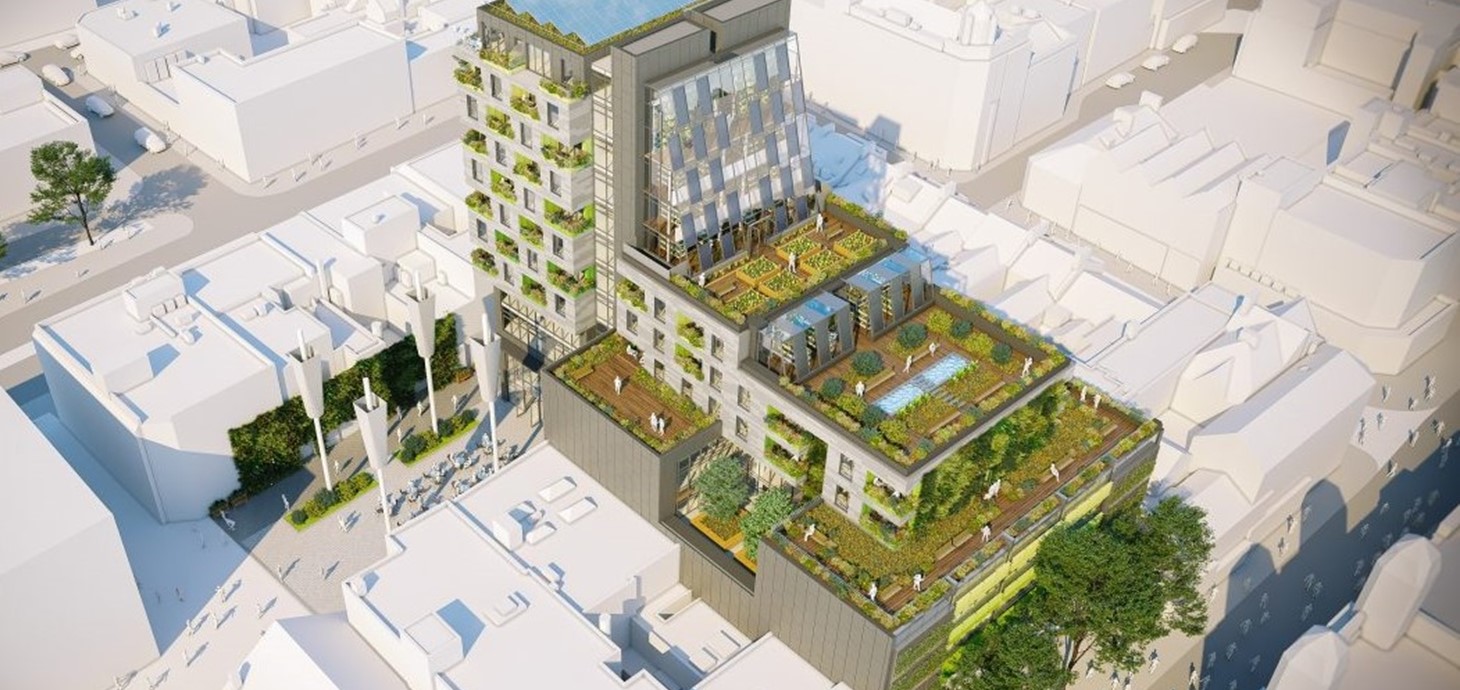
The new Biophilic building will transform the former Woolworths unit on Oxford Street in central Swansea – opposite Waterstones bookshop - and feature a new adjoining 13-storey structure.
Swansea University Centre for Sustainable Aquatic Research (CSAR) is a key partner in a pioneering Biophilic Living initiative which will provide a radical new approach to living and working within the city.
A first for the UK, this unique project will trial a new, scalable model that is set to change the way we conceive of inner-city housing in Wales.
The construction will transform the former Woolworths unit on Oxford Street in central Swansea – opposite Waterstones bookshop - and feature a new adjoining 13-storey structure.
It will be a mixed-use building with affordable and shared ownership housing, retail and low carbon commercial office space.
Residents will have the capacity to grow their own produce using the integral urban farm facility. Featuring two south-facing greenhouses at roof level, the building will use an aquaponics system, developed by Swansea University academics, designed to produce up to 4.5 tonnes of fruits, vegetables, salads and herbs per year.
Find out more about Biophilic Living in Swansea
Aquaponics is a food production system that creates a continuous cycle where waste produced by fish, living in on-site tanks, adds nutrients to the water which feeds the greenhouse plants. The water is then filtered and recirculated back into the system. The process will be explained in an educational public display on the ground floor of the tower
The project has been awarded funding through the Welsh Government Innovative Housing Programme.
Professor Geoff Proffitt, head of biosciences at Swansea University, explains:
“The Biophilic Living development will clearly be an inspirational building for the people who will live and work there, but it is more than an exciting home and workplace. The building will be driven through with cutting-edge biological, design, and engineering innovations. It will be a living, working example of great design, innovation and existing technology combining to support and nurture human health and wellbeing.
The Biophilic Living plan and the ethos that underpins its design and development is a focus for change, the start of a new sustainable, Biophilic urban regeneration of Swansea. If we are to fully respond to increasing global challenges, urban development and redevelopment will have to take a lead.
The project will contribute to local and global goals to address the climate change emergency, such as the UN Sustainable Development Goals.
Architects, designers, engineers and scientists will need to combine their skills to respond to these complex and immediate challenges. Biophilic Living is our first example of this collaborative approach”.
Swansea-based Hacer Developments is behind the scheme which has been designed by Swansea architects Powell Dobson, with specialist green roof and green wall designers Green Infrastructure Consultancy. It is a result of extensive collaborative working among a range of local organisations, including Swansea University, the Active Building Centre, Public Health Wales, Swansea Community Farm and Sero Homes Ltd.
The 'living building' is being funded by a mixture of private sector funding and funding from the Welsh Government's Innovative Housing Programme, Pobl and the Development Bank of Wales.
The building is earmarked for completion by the end of 2023
Find out more: Swansea University Centre for Sustainable Aquatic Research
